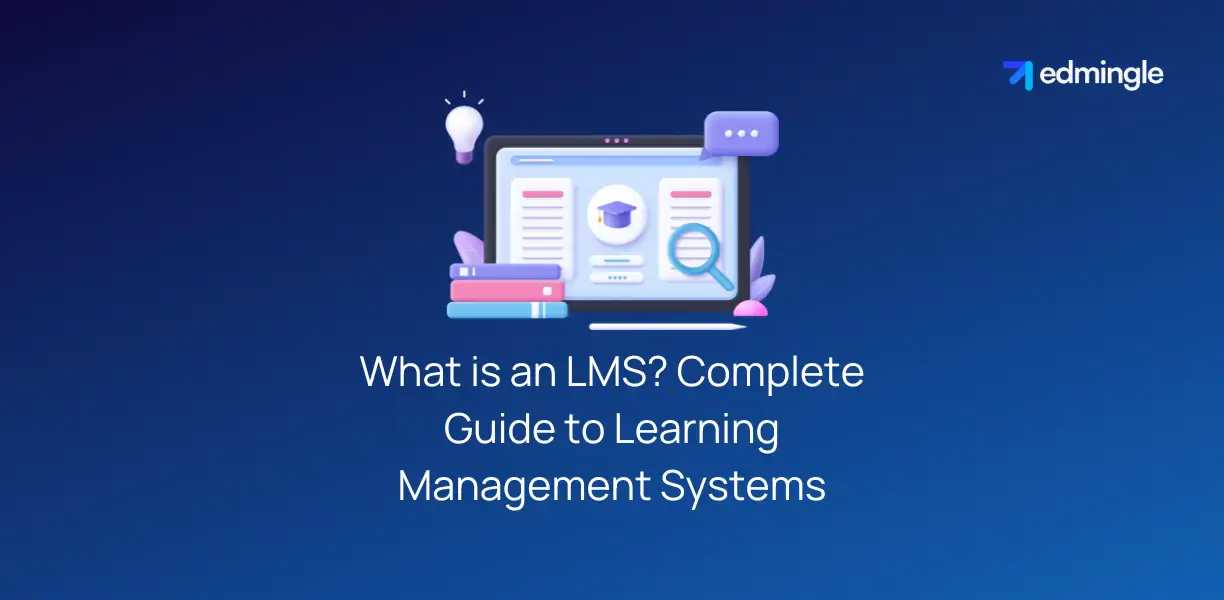
Since the pandemic, the application of e-learning skyrocketed and at the forefront of this, were learning management systems.
What is a learning management system?
It’s software designed for the overall management of educational & various types of training programs. LMSs are today being used to upskill and develop professionals industry-wide.
It’s not just a tool/platform, but a necessity in today’s fast-growing world. In this blog, we’ll discover what is an LMS and how it’s reshaping the educational landscape.
What is an LMS?

The world is fast digitizing and gaps in traditional training methods are gradually being recognized. A classroom setting with a blackboard and chalks are becoming a thing of the past.
The education landscape is being transformed by LMSs, short for learning management systems. It facilitates both self-paced training and instructor-led training.
It is a digital platform designed to manage, deliver and track educational courses or learning materials. Essentially, a tool that helps facilitate the delivery of training materials.
We’ve put together an article describing the history of these platforms. Along with their evolution in the pre, during & post COVID-19 pandemic.
Who Needs or Uses an LMS?
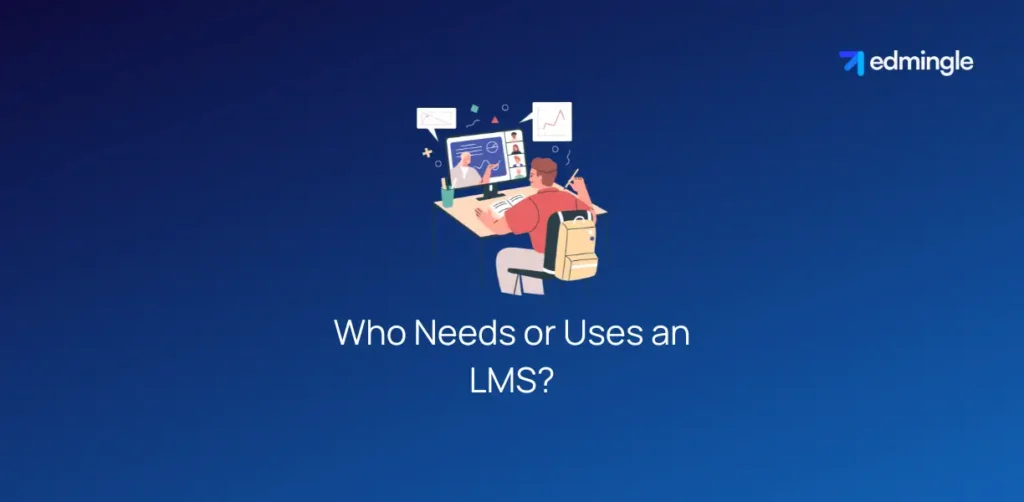
A learning management system is a valuable tool for a diverse array of users, spanning various domains & needs.
Educational institutions utilize LMSs to deliver online training courses, track student progress and foster virtual collaboration.
Corporations use them for corporate training in terms of employee training, onboarding and continuous professional development.
LMSs find their uses in a variety of industries like:
| IT Industry | Healthcare | Online Teaching |
| Manufacturing | Law Firms | K-12 Education |
| Hospitality | Language Teaching | Coaching Institutes |
| Small Businesses | Startups | Nonprofits |
The 9 major use cases of an LMS are mentioned in the table below:
| 1.Internal & External Training | 4.Sales Training | 7.Partner Training |
| 2.Onboarding & Initial Training | 5.Blended Learning Program | 8.Customer Training |
| 3.Employee Development & Employee Retention | 6.Hybrid Learning Programs | 9.Compliance Training |
Components and Working of an LMS
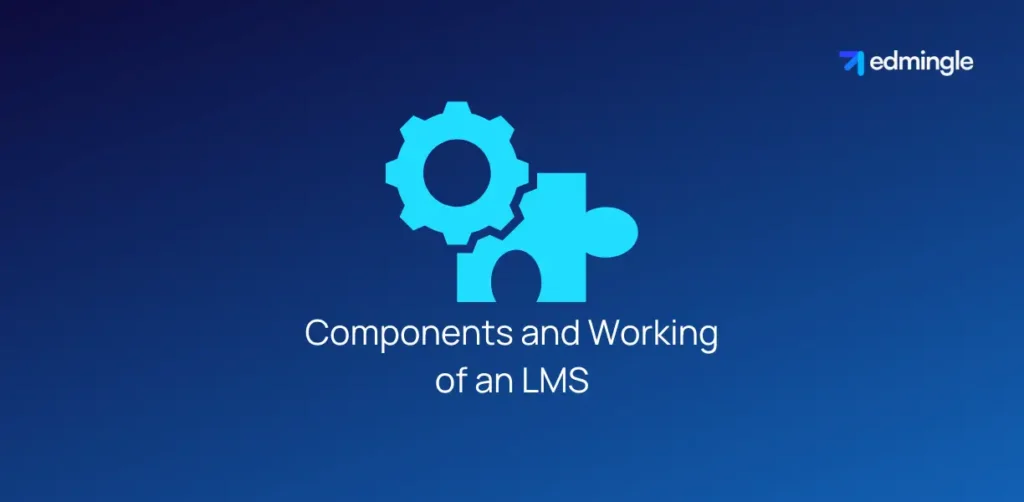
An LMS comprises various integrated components that facilitate online learning. These components mainly include its features, integrations and additional services provided by a vendor.
They function as comprehensive digital platforms designed to facilitate the entire learning process. From content creation to assessments, here’s a brief overview of how they work:
- Training content upload & organization for creating a coherent flow for learners.
- User management features for maintaining a proper hierarchy.
- Seamless course delivery for effective learning experiences.
- Facilitating communication among learners & between trainers and learner.
- Hosting assessments, grading and providing certifications.
- Tracking, analyzing and reporting course & learner progress and performance. Along with course completion, learner engagement, knowledge retention rates, test scores & other LMS engagement metrics.
- Providing & gathering feedback to ensure continuous improvements and relevance.
- Integrations with third-party tools and software for streamlined operations and a holistic learning experience.
- Enhancing e-learning accessibility while also scaling a training business.
An LMS orchestrates the entire online learning lifecycle. Providing a centralized platform for educators, learners and administrators to interact & learn.
Also read: Difference Between LMS and TMS.
What is a Learning Management System: Benefits
This section explores the benefits a learning management system brings for both; administrators/training managers and learners.
| For Administrators | For Learners |
| 1.Centralized Management of Learning Environment | 1.Flexibility and Convenience |
| 2.Efficient Monitoring & Reporting | 2.Personalized Learning/Diverse Learning Formats |
| 3.Cost-Effectiveness as it Reduces Your Operational Cost. | 3.Immediate Feedback & Course-Correction |
| 4.Scalability | 4.Collaboration and Social Learning |
Also read about the power of feedback in e-learning.
What is an LMS: Limitations

While the benefits are numerous, like any other software, there are some limitations. However, with the right strategy and implementation, the effect of these limitations can be nullified.
- Technical Challenges: Not every user is tech-savvy. Navigating within an LMS or troubleshooting issues can be challenging for some. Thereby, hindering the learning process.
- Limited Personal Interaction: While LMSs facilitate virtual communication, they can’t fully replicate the environment of face-to-face interactions. Hence, sometimes leading to feelings of isolation.
- Dependence on Connectivity: Accessing an LMS requires a stable internet connection. This can be a limitation for users in regions with poor connectivity.
Balancing the benefits with the potential drawbacks ensures a more holistic and effective training experience.
Features of a Learning Management System
LMSs come equipped with a variety of features tailored to enhance the online learning path for both educators and learners.
Here are some of its basic features:
| Course Creation and Management | Assessment Tools | Discussion Forums and Communication Tools | Resource Libraries | Integrations |
| User/Job Role Management | Tracking and Reporting | Calendar and Notification Systems | Mobile Learning | Customization and Branding |
To know about the entire list of features in modern LMSs, check our blog on LMS features.
LMS Deployment Models
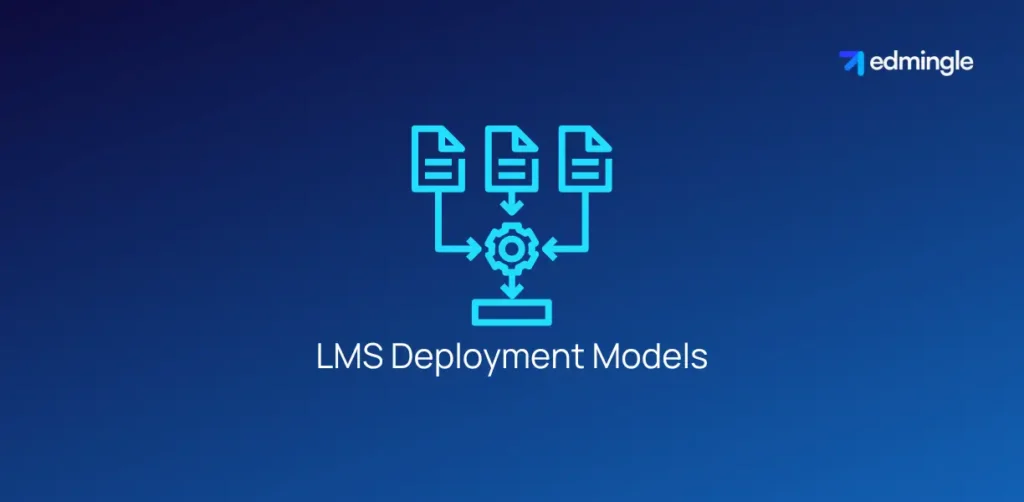
Depending on an organization’s use case, learning goals, technical capabilities and budget, LMS platforms can be deployed. This also brings out various types of LMSs, which can be majorly categorized as:
- SaaS LMS/Cloud-Based LMS
- On-Premise LMS/Installed LMS
- Open Source LMS (explore cloud-based LMS vs open-source LMS)
- Integrated LMS
When choosing an LMS deployment model, it’s vital to consider factors like the organization’s size, budget and long-term training goals. Each type offers its own set of advantages and challenges.
To explore the various types in detail, check our blog on types of LMS.
Since we talked about white-label LMSs, you might also like to read about the Difference Between White Label and Private Label LMS.
LMS Costs
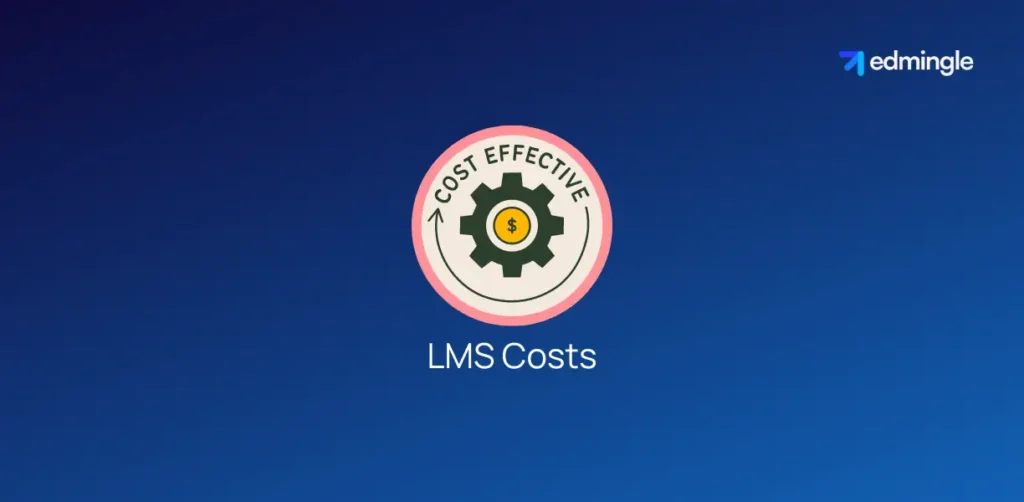
Choosing an LMS is an investment in both time and money. Understanding the associated costs and potential ROI is crucial for an informed decision making.
The cost of an LMS varies widely based on the platform, deployment type and features required. However, with clear objectives and a bit of research, one can find an LMS that offers great value for the investment.
Learning management systems come in a variety of pricing models to cater to different needs. To know more about these, check our blog on LMS Pricing.
Also Read: Difference Between Free LMS and Paid LMS.
Is a Learning Management System Worth the Investment?
Investing in an LMS can seem challenging initially. But the potential returns can justify the initial costs. Here’s how:
| Efficiency: An LMS streamlines training, reducing cost & the need for physical resources, venues and trainers. Over time, these extra cost savings can be substantial. | Analytics: The real time data-driven insights from an LMS can help refine training strategies, making them more effective and tailored to learners’ needs. |
| Scalability: As your organization grows, so can your training activities without significant incremental costs. | Competitive Edge: In today’s digital age, offering online training or e-learning can set an organization apart. Thus, attracting top talent or retaining clients. |
| Consistency: Ensure every learner, whether an employee, partner or student, receives consistent training and resources. |
LMS Standards
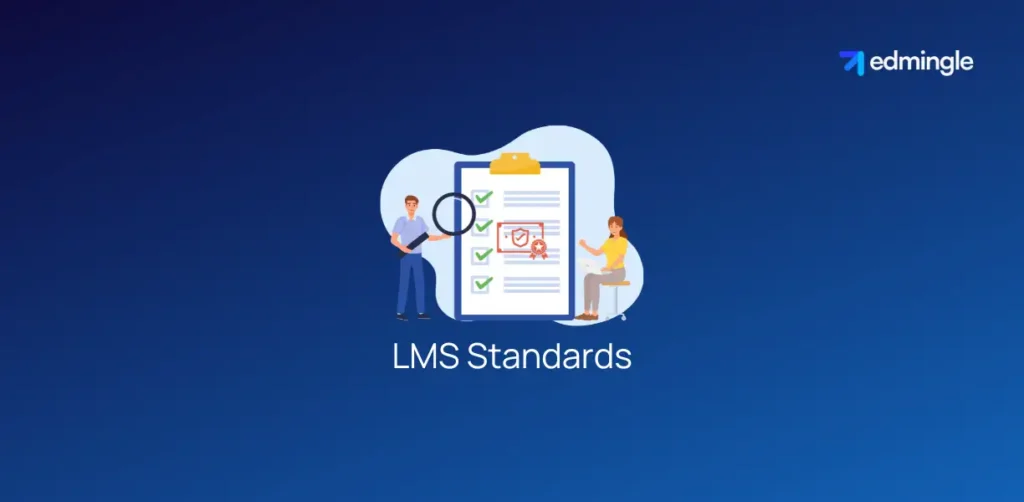
These refer to a set of specifications ensuring that e-learning content and LMSs can effectively communicate with each other. Here’s a concise overview of some of the main LMS standards:
- SCORM (Sharable Content Object Reference Model): It ensures that eLearning content can be easily shared, launched, and tracked across LMS platforms.
- xAPI (Experience API, formerly Tin Can API): It provides a more detailed tracking of learning experiences by recording learning activities.
- AICC (Aviation Industry Computer-Based Training Committee): Primarily served the aviation industry but is being gradually phased out in favor of SCORM and xAPI.
- LTI (Learning Tools Interoperability): It enables the seamless integration of various learning applications into a central LMS platform.
- CMl (Content Management Interface): It defines how eLearning content should be organized and how the communication between content and LMS should occur.
- PENS (Package Exchange Notification Services): It automates the publishing process, allowing content authoring tools to directly send course packages to an LMS.
By adhering to these standards, organizations can ensure interoperability, reusability and consistency in eLearning content across various LMS platforms.
If you haven’t yet created your online course, our blog on How to Create an Online Course will be helpful.
10 Popular LMS Platforms of 2024
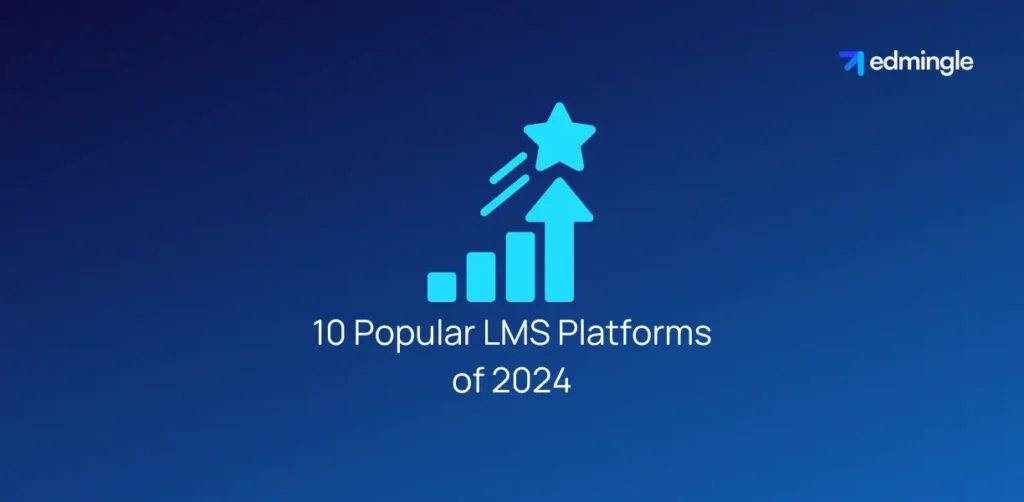
The e-learning market has exploded in recent years, with options more diverse than ever. To ease your search, we’ve curated the 10 popular LMS platforms of 2024.
1.Edmingle
A fast-growing cloud-based LMS platform, Edmingle offers a wide range of features, integrations and rich analytics. It aims to help training businesses deliver world class learning experiences with ZERO operational hassles, all under their own brand.
Some of the key features that set it apart from other players in the market include; multi batch and branch management, 100% white-labelling and the support for multiple training models.
To explore more about this platform, book a free demo with an expert.
2.Docebo
Harnessing the power of AI, Docebo delivers a personalized learning experience. Its emphasis on social learning & gamification make it a top-choice.
3.Moodle
Moodle is an open-source LMS platform, famous for its flexibility & customizability, especially among academic institutions.
4.TalentLMS
A versatile cloud-based LMS designed for simplicity and functionality in e-learning environments.
5.360Learning
Engages collaborative learning with a platform that integrates peer learning and feedback into its core.
6.Absorb LMS
Offers a flexible, customizable interface for enterprises. While emphasizing automation and a seamless user interface & experience.
7.Canvas
Widely used in education institutions, Canvas supports a comprehensive and user-friendly learning environment.
8.Blackboard
A pioneer in educational technology, providing extensive learning management tools for institutions worldwide.
9.iSpring Learn
Focuses on rapid course development, offering a blend of authoring tools and LMS capabilities.
10.LearnWorlds
Allows creators to build interactive online courses with advanced analytics and social learning features.
2024 presents a diverse array of LMS platforms, each with its unique strengths. The key to finding the right one for you lies in verifying if it aligns with your needs & goals.
Selecting the Best LMS for You
Selecting the ideal LMS is a critical decision that hinges on a blend of factors. With this step-by-step guide, we help you make a well-informed decision for your choice of LMS.
| Firstly, define clear objectives of your use case. Whether you want to train employees, sell courses or offer blended learning programs. |
| Next, assess your budget constraints. This dictates the range of options available for you. Also, consider the level of scalability and flexibility you require at this point. |
| Then, list down the essential features you need for your development programs or online course. |
| Additionally, thoroughly research reviews and testimonials. These reveal potential strengths and pitfalls of each platform. |
| Lastly, assess the customer support and service provided. Along with the reputation of the LMS vendor. |
Even with this guide in hand, don’t forget to take an LMS Demo or free-trial. This helps in exploring the platform firsthand and assess its compatibility with your expertise.
Conclusion
It’s evident how these digital platforms have become the backbone of e-learning. From simplifying the overall management to offering personalized learning experiences.
LMSs have reshaped the educational landscape in unimaginable ways. Grown from basic online repositories, they’ve today become complete learning ecosystems.
Ultimately, the question isn’t only about “what is an LMS”? It expands further to what’s the best LMS for you.
FAQs on What is an LMS
1.How is an LMS different from an LCMS or a CMS?
While all three systems manage content, they serve different purposes. An LMS focuses on delivering and tracking courses for learners. An LCMS is specifically designed for creating and managing educational content. A CMS is designed to manage and publish digital content, not necessarily limited to learning.
2.Are all LMS platforms expensive?
While there are premium LMS platforms that come with a higher price tag. There are also free and open-source LMSs available. The cost often depends on the features, scalability and customization options required.
3.Can I create my own courses on an LMS or do I need to rely on pre-existing content?
Most LMS platforms allow active users to create their own courses using built-in tools. While some platforms might offer libraries of pre-existing content. It totally depends on your preferences and budget.

Leave a Reply